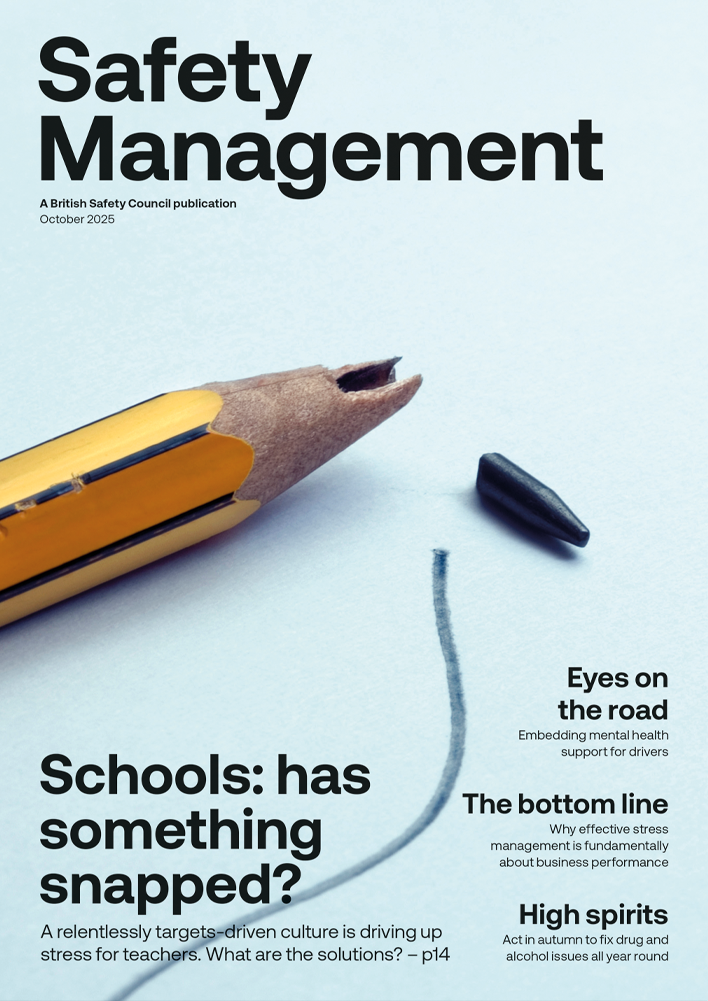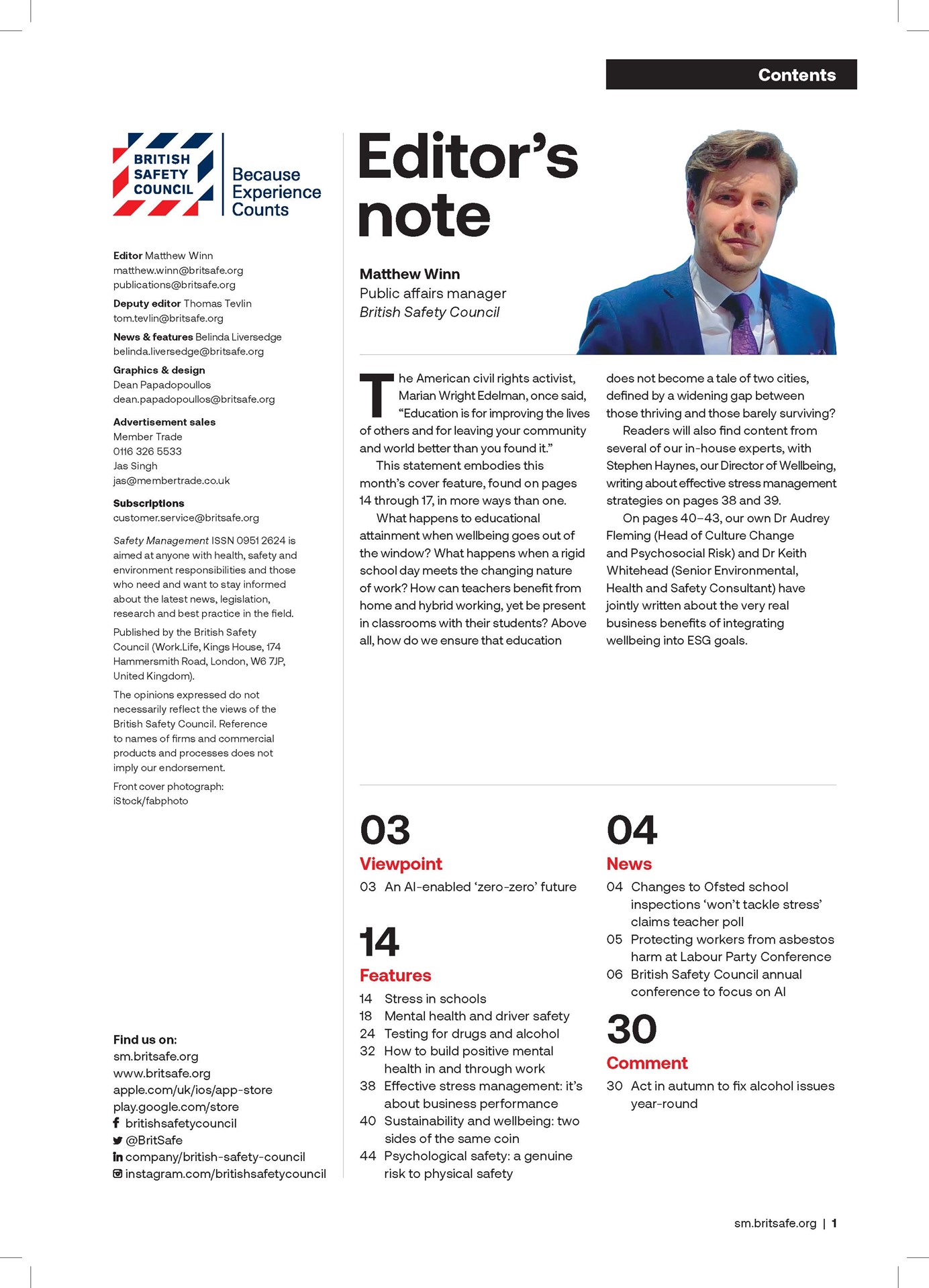Understanding the underlying reasons why workers are failing to follow safety rules is crucial for developing the right ‘nudges’ and processes to encourage staff to always act in a safe fashion.
Features
Why understanding workers’ attitudes to rules is key to improving safety culture
When we are young, we do as we are told simply because we‘re told to at home and at school. It’s a learned response to our environment and our social norms but as we grow and develop our own individual thought processes, we learn that breaking the ‘no running in the corridor at school’ rule doesn’t necessarily end in disaster.
Encouraging the right decision
According to research published on Nature.com, the brain has already processed the data on how we are going to respond 10 seconds before we act. We use different parts of the brain for different processes, but the vast majority of our decisions are already automated. Our brain has already weighed up the different potential outcomes and made its decision before we act. So, if a person is breaking the rules in a work environment, we have to ask why.
Are they pushed for time? Is it because of staff resourcing issues? Are they facing other external pressures? Do they want (or need) to get home early?
Only by considering all the things that impact on an individual worker’s day, and the way our brains think, can we use this information to adapt and apply rules.
Leaders must understand their people
The person who does the job is the expert, so leaders must try to understand why that person may be breaking a rule. There is probably a good reason.
- You can ask certain questions to try and understand your workers’ decision-making processes, such as:
- What’s stopping you from achieving or completing this task?
- What would make it easier for you to carry out and/or finish the task?
- What is making this job really hard for you?
When you gain people’s answers, you can break down the reasoning behind their desired and undesired behaviours. Team leaders are then able to create processes that encourages rule following – also known as ‘nudge theory’.
The psychology: risk homeostasis - aka ‘what can you get away with?’
Each person has a level of risk they find acceptable. As we push a boundary, and get away with it, this becomes our new normal. And because we got away with it last time, we’re likely to do it again... and again.
But particularly in high-risk work environments, risk homeostasis can be life threatening.
Making safety a ‘priority’ isn’t good enough
It’s rare for a week to go by without news of injuries or deaths in the health and safety trade press.
There can’t be any more talk of ‘health and safety being our highest priority’. Instead, health and safety must be a core value in an organisation. Leaders must be willing to stand up and say certain behaviours aren’t acceptable and remind workers of the company values.
Priorities move up or down a list, depending on the tasks coming in. For example, if meeting a finance deadline suddenly becomes urgent, safety will fall down the ‘priority’ list. But a value remains important regardless of competing priorities. It’s an internal behaviour underpinning all aspects of an organisation and thus, as a value, behaving unsafely should feel uncomfortable as you’re undermining the things that you and your company hold dear.
Ultimately, if an employer doesn’t put the time and effort into understanding what is happening, they will never be able to change the situation and people will continue to break rules.
Leadership, communications and employee engagement are the three top areas to consider when investigating why people break the rules, why things go wrong, and why are people are injured at work.
About the author
Sarah Prince has an MSc in the Psychology of Behaviour Change in Health and Safety and more than 20 years’ experience in developing and leading safety culture programmes. Contact her here.
For more information on the services offered by Tribe Culture Change click here.
FEATURES

Why menstruation support matters at work
By Deborah Garlick, Menstruation Friendly by Henpicked on 03 December 2025
Although forward-thinking organisations are increasingly taking action on menopause awareness and support at work, attention is now turning to menstrual health as the next essential step in building an inclusive, equitable and high-performing workplace.

Neurodiversity at work: getting started on creating a supportive environment for neurodivergent workers
By Andy Hooke CMIOSH Chartered health and safety consultant on 03 December 2025
Creating a neuroinclusive workplace brings many benefits, including making neurodivergent employees more comfortable about seeking help and support from managers and colleagues, and there are some simple ways of getting started with the process.

Human-centred technology for better work design: rethinking musculoskeletal disorder prevention
By Cam Stevens, Pocketknife Group on 03 December 2025
Although technologies like computer vision analysis, machine learning and wearable sensors are increasingly being used to identify and assess the causes of work-related musculoskeletal disorders (MSDs), it’s essential to consider data relating to all aspects of work design when seeking to reduce MSDs in the workplace.



